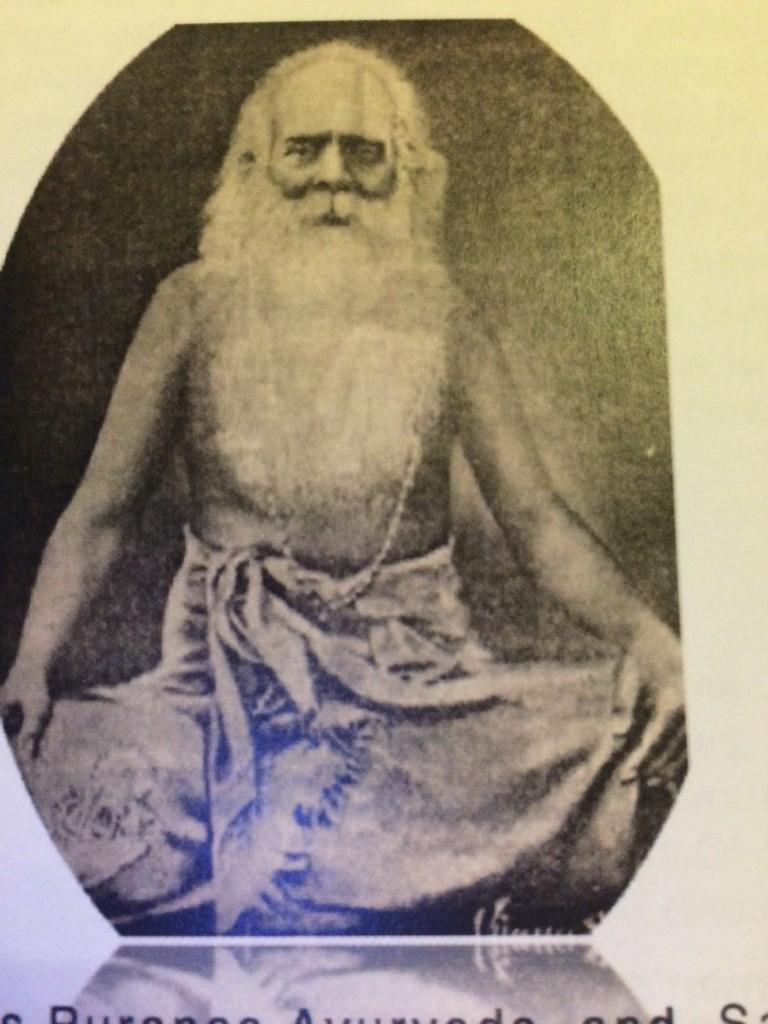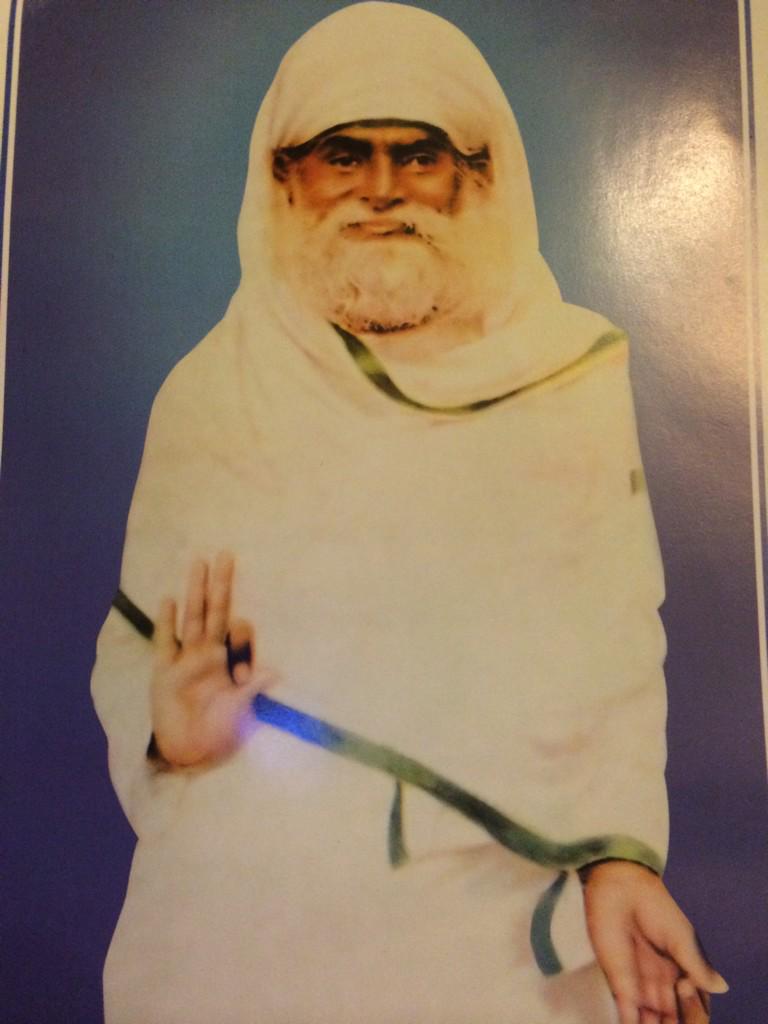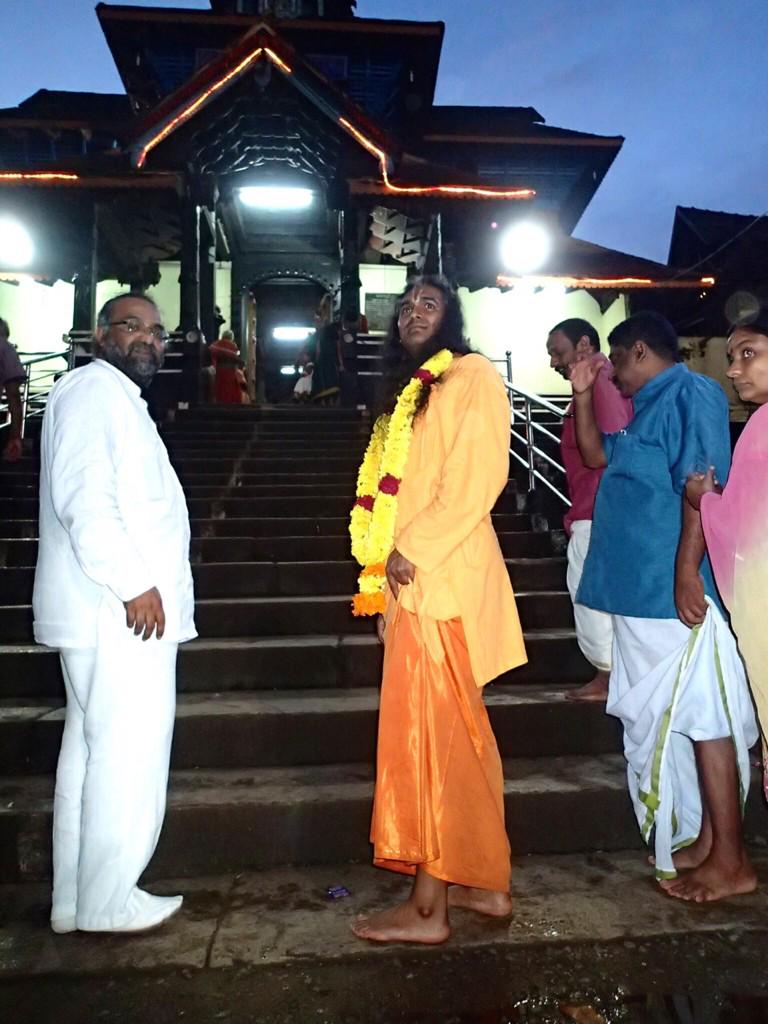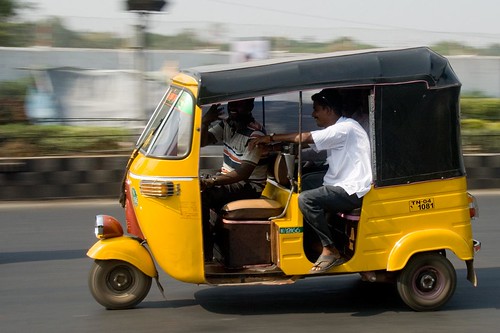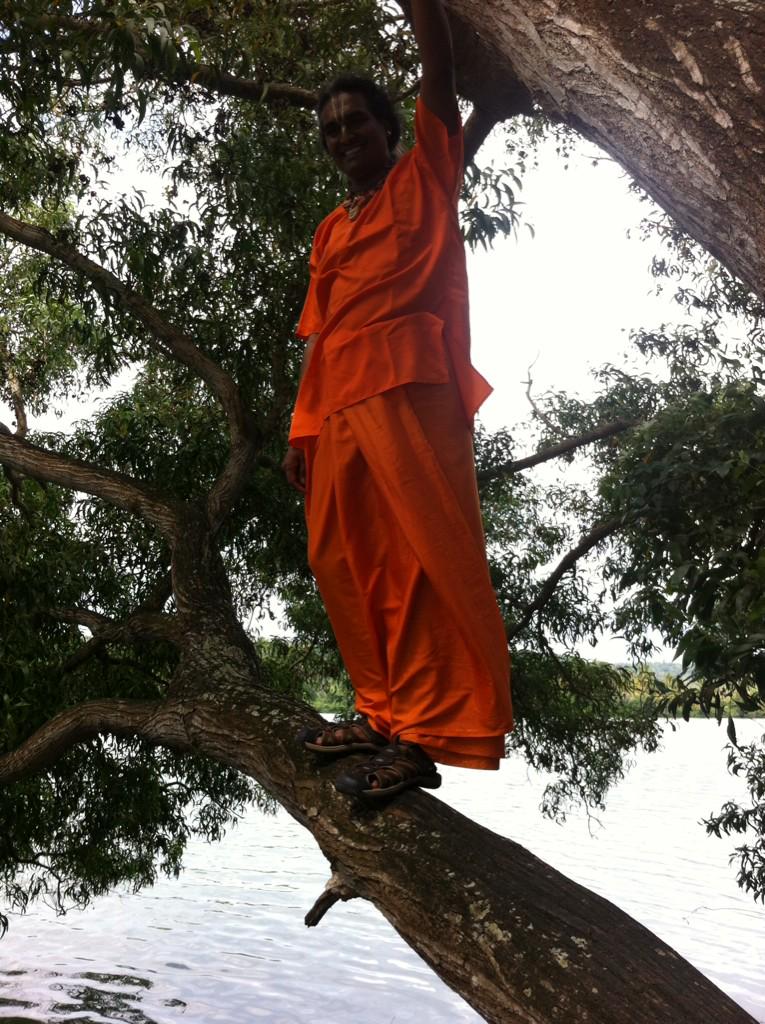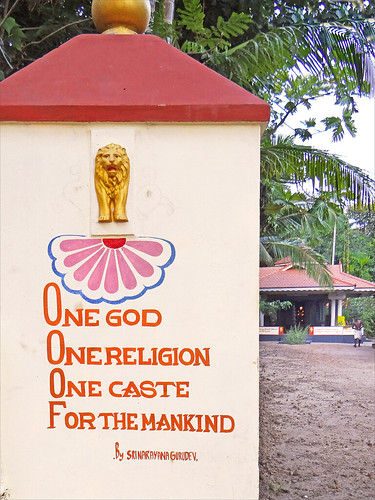Many of the devotees in the pilgrimage with Swami have been generous with the little free time that they have on the pilgrimage, to put together written accounts of their adventures in India for us to read. For the next few days, we'd like to share those accounts, each one coming from a different person participating in the trip.
As you have read yesterday about the events of day one, here is a first-hand account of those events from Dimitri (USA) . We'll follow that with another account from Kadambari (Germany), and lots of pictures from the group's adventures.
Here we go:...
Day 1 south India pilgrimage with Swami - Dimitri
I awoke to the sound of wind blowing through palm trees, when I stepped out onto the balcony and was met with amazing views of the Indian ocean. After a relaxing morning getting settled into our hotel, as a group we met in the yoga room of the hotel to see Swamiji for the first time.
Although the weather was hot we were graced with some sporadic rain showers that made for a few refreshing moments intertwined nicely between the dosas, and chai we had for breakfast. So we all found ourselves in the open air of the top floor of the hotel, receiving our briefing from Yamuna of the do’s and don’ts about how to conduct ourselves in India and more importantly with Swami.
Anticipation filled the air and soon there after we found ourselves singing bhajans waiting for the grand entrance of Guruji. Expectation grew and before we knew it we were on our feet as his orange robe graced our eyes. With a candid smile and those soft eyes he welcomed us all to the land of Ayurveda and began to speak of a story about the land of Kerela and how it came to be.
Right about this point my mind started to focus more on drinking water out of a coconut than what Swamiji was talking about, but I'll try to paraphrase as best I can. “You see” he said, Parasuram [the 6th of the 10 incarnations of Lord Vishnu] threw His axe, and where it landed was Kerala.
For more on that story click here.
 |
| Lord Parasurama |
The story then shifted to the mountains that lay near us and how they came to be. “You know,” he began, “Hanuman was carrying the mountain to Sri Lanka and a piece of the mountain fell in Kerala leaving a wide variety of herbs and fruits.” He then went of to talk about how the traditions are different in the south, especially in the temples.
Fast forward a few hours and we set out for the temple on foot with a full stomach and a desire to see the first temple of our trip. The rains had calmed down to a light sprinkle and in the 2 km walk we managed to turn quite a few heads. 40 westerners walking down the street in dotis and saris all sporting tilaks, some clapping and singing bhajans - we had gone and stolen the local style right out from under them, and the look on their faces showed they didn’t know what to think!
As we arrived at the temple, we took off our sandals and started making our way up the stairs to the main entrance, Swami having already arrived stood at the top of the stairs beckoning us forth towards the Vishnu temple.
Instantly the differences in tradition became apparent. When we entered the temple, all of the men were required to remove their shirts. Another difference was that the Shiva and Lakshmi Narayana murtis were all on the premises and they didn’t each have their own separate temples.
As we went inside the coordinators were asking about possibilities of pujas or abishekems. I walked around the murti and felt the wet stone against my feet, trying to take it all in, still not fully believing where I was or what I was doing.
Just as the puja was starting up a few men with drums and flutes drew near. Their off-beat drumming combined with the sound of the bells in the temple, prayers from Swami, and the Mahamantra being sung by the local woman standing next to me, all made for a very powerful and intense first temple experience.
The smell of curry in the air, the feel of kum kum on our forheads, we had arrived and our pilgrimage with Sri Swami Vishwananda had begun.
 |
| Sri Swami Vishwananda with the head of the Jagatguru Sree Narayana Guru Ashram |
DAY 2 - Thursday in Varkala (Kerala region) - Kadambari
Ashram & pilgrimage "Sree Narayana Gurudev Jagathguru"
The second day greeted us with overcast skies and light rain. This did not stop some devotees from starting the day at 7:00h with OM Healing in the yoga room in "Oceano Cliff".
After the invigorating Ayurvedic breakfast we went straight up with ten "Tuc-Tucs" in the convoy to the "Sivagiri Hill" where the widely known ashram & pilgrimage of Sree Narayana Gurudev Jagathguru (1856 - 1928) is located.
 |
| Sivagiri Hill |
For our visit to the ashram there was this time a "color-dress-code" in addition to the traditional temple clothing. Bright yellow flags adorned our motorized rickshaws. For the last two kilometers we made a pilgrimage on foot with the flags in hand, to the foot of the "Sivagiri Hills". "Om Namo Narayanaya" was chanted by all the devotees of many nationalities, as we merged more and more into a single unit.
One of the leading swamis received us warmly and gave us an informative insight into the philosophy of his guru, whose motto was: "One Caste - One Religion - One God".
This was followed by an invitation to a wholesome Ayurvedic lunch, traditionally served on a banana leaf. Many chutneys in all kinds of flavors you eat with the fingers of the right hand together with rice and cakes. The left hand is considered unclean in India and remains under the table.
Finally, we all got a lesson of respectful behaviour towards our Guruji. We were able to visit the spiritual head of the ashram in private rooms and receive Prasad. Gurudev stood near the elderly Swami, before whom we stood before. I was a little nervous and unsure how I should behave. A Mataji in front of me bowed low before Guruji, which I almost did not think of. So I was glad about that memory and bowed low before Guruji and afterwards towards before the spiritual head of the ashram.
Back outside I stood next to the Mataji which was queued before me and heard Gurudev beside her saying strict say lovingly, that they never bow before other masters, gurus, saints etc - only before their Guru. It is like offending him, unless it is the Guru who orders us explicitly to do so. This message was shared very quickly around the travelers, with me, and many others. We were all happy with this important lesson, which was followed by a wonderful Satsang with Swamini Mohini and Swamini Kishori on the beach in the afternoon.
Much Love & Sunshine,
Kadambari
